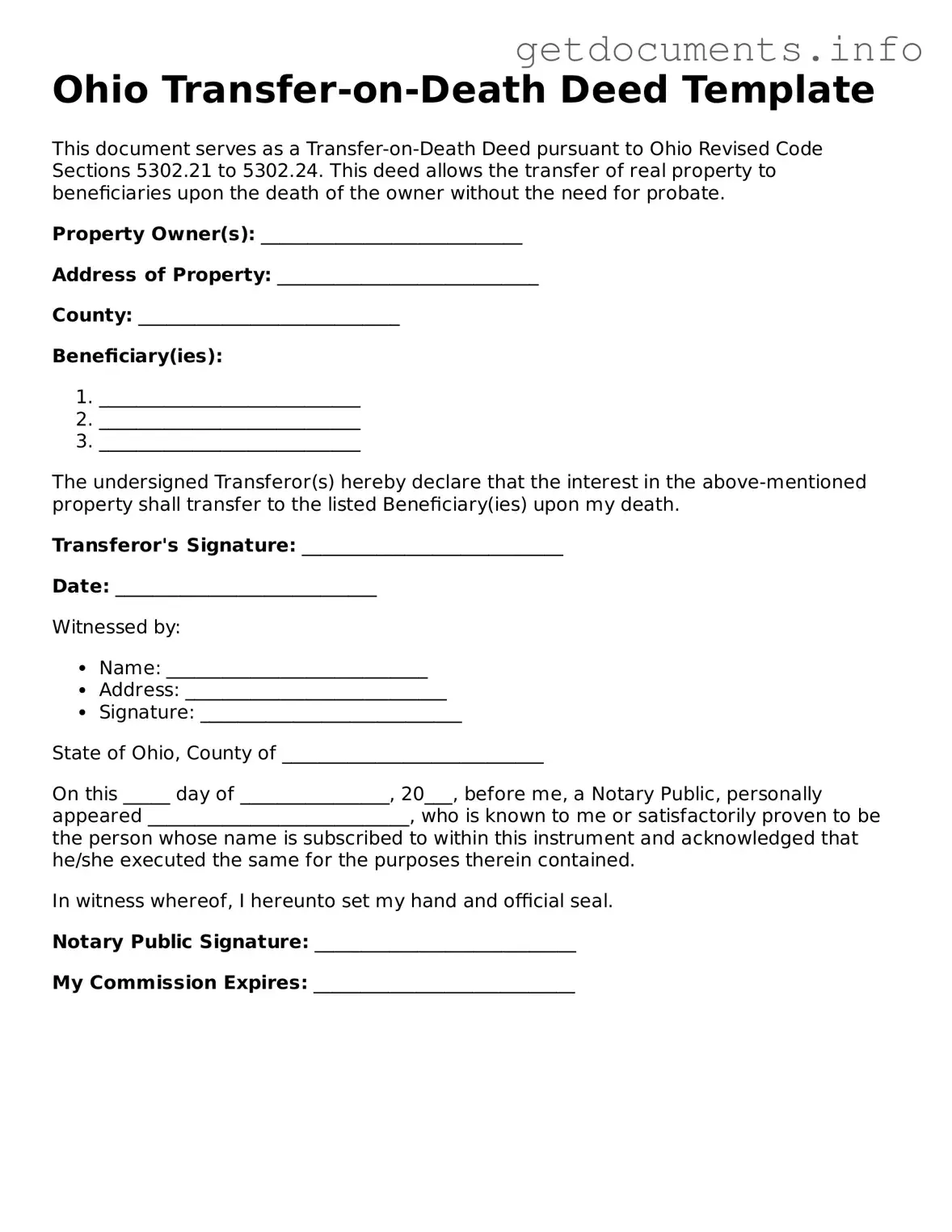Free Transfer-on-Death Deed Template for Ohio
The Ohio Transfer-on-Death Deed form allows property owners to designate beneficiaries who will receive their property upon their death, without the need for probate. This straightforward legal tool simplifies the transfer of real estate and can help streamline estate planning. To get started with this essential form, click the button below.
Access Transfer-on-Death Deed Editor
